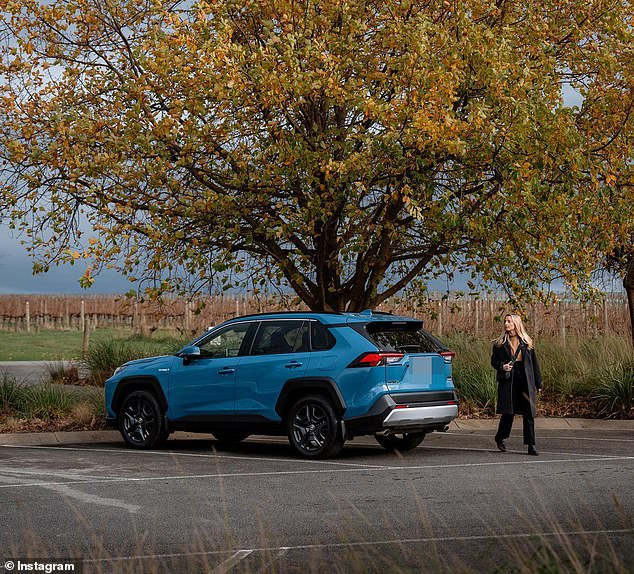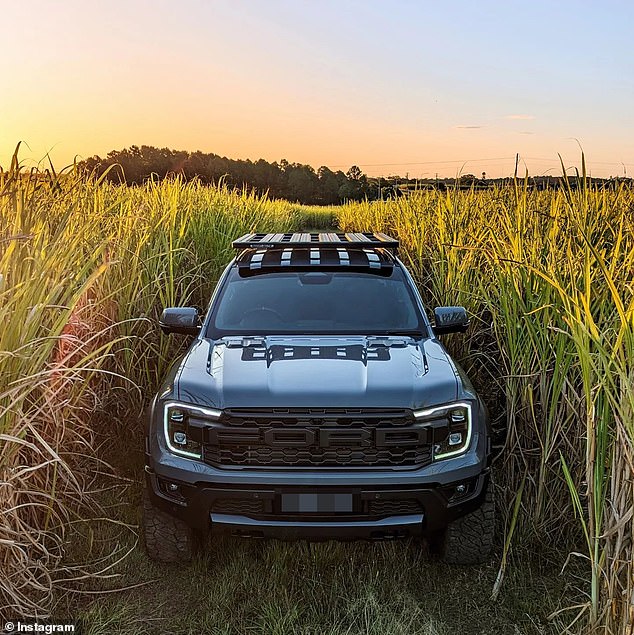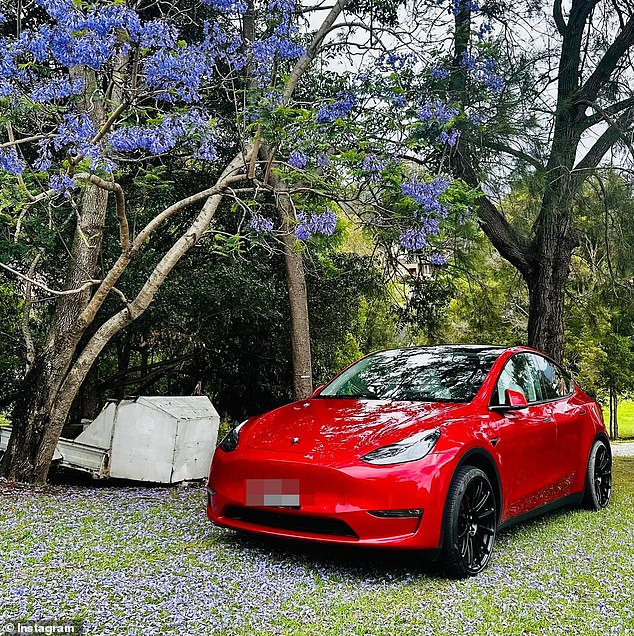Australian motorists are shunning all-electric cars and sales are plunging with zero-emission vehicles in the top 10 for the first time in almost two years, new figures show.
This comes just months before Anthony Albanese’s government introduces a New Vehicle Efficiency Standard that aims to reduce vehicle emissions by 59 per cent in just four years, with penalties imposed on sellers of petrol cars , diesel and even gasoline-electric hybrids.
For the first time since July 2022, the Tesla Model Y, Tesla Model 3 and MG ZS, available as a battery-electric SUV, were absent from the monthly top 10 list of the Federal Chamber of the Automotive Industry.
Last month, Tesla had no models in the top 20, after being in the top three in both February and March.
Australian motorists are avoiding zero-emission all-electric cars in the top 10 for the first time in almost two years, new figures show. Last month, Tesla had no models in the top 20 (pictured, a Tesla Model 3, Australia’s 26th best-selling car in April)
Instead, the best-selling car in Australia in April was the Toyota RAV4, an SUV available as a hybrid that was last the number one car in August 2020.
Its 5,857 monthly sales marked an increase of 166.5 percent compared to the previous year.
Cars available as a hybrid took four places in the top 10 list, including the Toyota Corolla in sixth place with 2,097 sales, an increase of 165.1 percent compared to April 2023.
The Toyota Camry sedan, also available as a hybrid, ranked ninth with 1,873 sales, more than triple the previous year’s increase of 226.3 percent.
The Mitsubishi Outlander, available as a plug-in hybrid, completed the top 10 list with 1,848 sales.
Environmentally conscious motorists are now favoring hybrid and plug-in hybrid vehicles, which together had a market share of 18.3 percent, more than double the April 2023 level of 7.5 percent.
But battery electric vehicles took a big drop to 6.4 percent, down from 7.9 percent a year ago, when they were outselling hybrids.
The Tesla Model 3 had 911 sales in April, down 42.4 per cent on the previous year, ranking 26th just two months after it was the third best-selling car in Australia.

Instead, the best-selling car in Australia in April was the Toyota RAV4, an SUV available as a hybrid that was last the number one car in August 2020.
The more expensive Tesla Model Y suffered a 44.3 percent sales drop, with 1,166 orders, placing it in 21st position, a big drop from third place in March.
Tesla announced in March that it would resign from the Federal Chamber of Automotive Industries in protest at the car industry lobby’s campaign against Labour’s New Vehicle Efficiency Standard, but its electric vehicles will still be included in the data. FCAI monthly sales until the end of June.
Electric vehicles took up two spots on the top 20 list, but only for models that were also available as unleaded cars.
They included the MG ZS at 11th place with 1,707 sales and the Hyundai Kona at 17th place with 1,303 sales.
Diesel cars took six places in the top 10, including the Ford Ranger in second place with 5,569 sales, putting it ahead of the Toyota HiLux in third place with 4,693 sales.
The other best-selling diesel engines included the Ford Everest SUV in fourth place with 2,400 sales and the Isuzu D-Max ute in fifth place with 2,380 sales.
The all-wheel drive LandCruiser, including older 70 series models that expel 281 grams of carbon per kilometre, came in seventh with 1,970 sales, ahead of the Isuzu MU-X SUV with 1,876 sales.
Beyond the top 10, cars available as hybrids in the top 20 include the Kia Sportage at 12th with 1,699 sales, the Hyundai Tucson at 14th with 1,548 sales, the Nissan X-Trail at 19th with 1,219 sales and the Toyota Yaris Cross. in 20th place with 1,180 sales.
Labour’s New Vehicle Efficiency Standard (NVES), announced in February, seeks to impose sanctions on carmakers who relied too heavily on the sale of petrol and diesel cars, including those with a petrol-electric hybrid engine.
The plan, which will come into force on January 1, 2025, aims to reduce average carbon emissions from passenger vehicles to 58 grams of carbon per kilometer by 2029.

Diesel cars took six places in the top 10, including the Ford Ranger (pictured, the Raptor model that uses premium unleaded petrol), in second place, with 5,569 sales, putting it ahead of the Toyota HiLux in third. place with 4,693 sales.
This would mark a 59 per cent reduction from the target of 141 grams per kilometer by 2025 as part of Labour’s plan to reduce carbon emissions by 43 per cent by 2030.
Sellers of light commercial vehicles, which include utes and four-wheel drive vehicles, would have to reduce emissions by 47.6 per cent, from 210 grams of CO2 per kilometer in 2025 to 110 g/km in 2029.
No gasoline, diesel or hybrid car on sale now would meet those NVES targets, and automakers were fined $100 for every gram their new fleet, on average, exceeded a specific threshold.
This would shift costs to consumers but reward EV makers who could sell carbon credits to rivals, and the plan is expected to reduce the price of a Tesla Model Y by $15,390, according to calculations by the FCAI.
The Labor Party aims to reduce carbon emissions by 43 per cent by 2030 as part of a net zero target for 2050.


